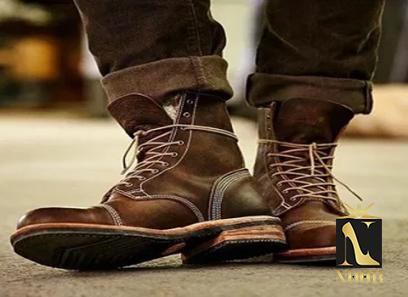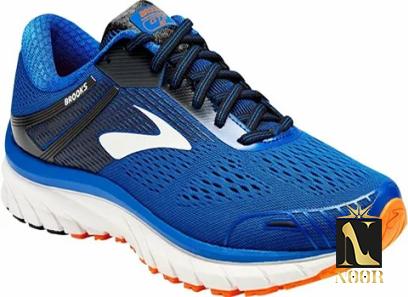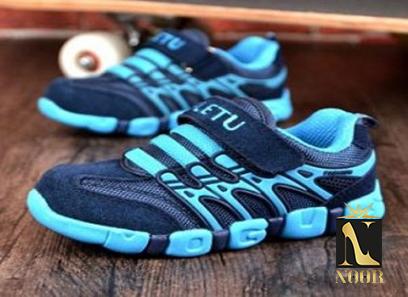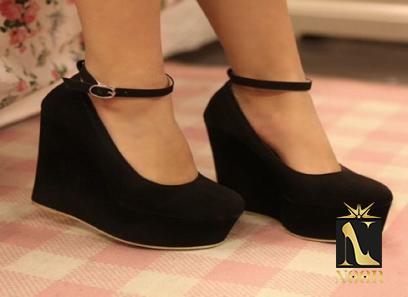When it comes to selecting the perfect pair of shoes, one of the key considerations is the material they are made of. Leather and synthetic leather are two popular options in the footwear industry. While both materials have their own strengths and weaknesses, understanding the key differences between synthetic leather shoes and those made from genuine leather can help you make an informed decision based on your personal preferences. In this article, we will delve into the detailed comparison of synthetic leather shoes vs leather, covering various aspects such as durability, comfort, environmental impact, and price. Durability: Leather shoes have long been lauded for their durability. Genuine leather is renowned for its ability to withstand wear and tear, making it an excellent choice for long-lasting footwear. When cared for properly, leather shoes can last for many years and even develop a beautiful patina over time, enhancing their aesthetics.

.
 On the other hand, synthetic leather shoes, while generally durable, may not exhibit the same level of longevity as real leather. They are more susceptible to scuffs, scratches, and deterioration over time. However, advancements in technology have improved the quality and longevity of synthetic leather shoes in recent years, making them a viable option for those seeking a more affordable and sustainable alternative to genuine leather. Comfort: Comfort is a crucial factor when choosing a pair of shoes. Leather shoes typically offer superior comfort due to their natural ability to stretch and mold to the shape of the wearer’s foot. This attribute allows the shoes to provide a better fit, reduce discomfort, and minimize the risk of blisters or calluses. Synthetic leather, on the other hand, is less pliable and often lacks the breathability of natural leather. This can lead to a less comfortable experience, particularly during prolonged use or in hot climates.
On the other hand, synthetic leather shoes, while generally durable, may not exhibit the same level of longevity as real leather. They are more susceptible to scuffs, scratches, and deterioration over time. However, advancements in technology have improved the quality and longevity of synthetic leather shoes in recent years, making them a viable option for those seeking a more affordable and sustainable alternative to genuine leather. Comfort: Comfort is a crucial factor when choosing a pair of shoes. Leather shoes typically offer superior comfort due to their natural ability to stretch and mold to the shape of the wearer’s foot. This attribute allows the shoes to provide a better fit, reduce discomfort, and minimize the risk of blisters or calluses. Synthetic leather, on the other hand, is less pliable and often lacks the breathability of natural leather. This can lead to a less comfortable experience, particularly during prolonged use or in hot climates.
..
 However, it’s worth noting that some synthetic leather shoes come with additional padding or cushioning to enhance comfort levels. Environmental Impact: Environmental considerations have become increasingly important in recent years. Leather production, particularly from cows, has been associated with deforestation, greenhouse gas emissions, and the use of harmful chemicals. On the other hand, synthetic leather is typically made from petroleum-based materials such as polyurethane (PU) or polyvinyl chloride (PVC), which are derived from non-renewable resources. The production of synthetic leather also involves the use of chemicals that can have adverse effects on the environment. However, advancements in technology have given rise to more sustainable options, with some manufacturers using recycled materials or water-based processes to minimize environmental impact. It’s important to note that both leather and synthetic leather have their environmental pros and cons, and the choice between them depends on personal values and priorities. Aesthetics: Leather shoes exude a timeless charm and elegance that is difficult to replicate with synthetic materials. The natural grain patterns, unique markings, and variations in color give leather footwear a distinctive and aesthetic appeal.
However, it’s worth noting that some synthetic leather shoes come with additional padding or cushioning to enhance comfort levels. Environmental Impact: Environmental considerations have become increasingly important in recent years. Leather production, particularly from cows, has been associated with deforestation, greenhouse gas emissions, and the use of harmful chemicals. On the other hand, synthetic leather is typically made from petroleum-based materials such as polyurethane (PU) or polyvinyl chloride (PVC), which are derived from non-renewable resources. The production of synthetic leather also involves the use of chemicals that can have adverse effects on the environment. However, advancements in technology have given rise to more sustainable options, with some manufacturers using recycled materials or water-based processes to minimize environmental impact. It’s important to note that both leather and synthetic leather have their environmental pros and cons, and the choice between them depends on personal values and priorities. Aesthetics: Leather shoes exude a timeless charm and elegance that is difficult to replicate with synthetic materials. The natural grain patterns, unique markings, and variations in color give leather footwear a distinctive and aesthetic appeal.
…
 Additionally, leather tends to age gracefully, acquiring a rich patina that enhances its visual appeal. Synthetic leather, on the other hand, can mimic the appearance of real leather but may lack the depth and natural variations found in genuine leather. Manufacturers have made significant strides in improving the aesthetics of synthetic leather, but it still may not match the visual appeal and character of genuine leather for some consumers. Price: Price is a significant factor for many consumers when deciding between synthetic leather shoes and genuine leather shoes. Leather shoes are often more expensive due to the cost associated with sourcing and processing animal hides. The craftsmanship involved in creating leather footwear, especially handmade or high-end luxury brands, further drives up the price. Synthetic leather shoes, on the other hand, tend to be more affordable as the production process is generally cheaper. They can offer a budget-friendly option for individuals who desire the appearance of leather but have budget constraints. Conclusion: Choosing between synthetic leather shoes and genuine leather shoes ultimately comes down to personal preferences, taking into account factors such as durability, comfort, environmental impact, aesthetics, and price. Genuine leather shoes offer unparalleled durability, comfort, and natural beauty, but they can be costly and have environmental implications. Synthetic leather shoes, on the other hand, have made significant advancements in terms of durability, comfort, and sustainability while providing a more affordable option. However, synthetic leather may not match the aesthetics or age as gracefully as genuine leather. Ultimately, consumers should weigh these factors carefully and make their decision based on their individual values and needs.
Additionally, leather tends to age gracefully, acquiring a rich patina that enhances its visual appeal. Synthetic leather, on the other hand, can mimic the appearance of real leather but may lack the depth and natural variations found in genuine leather. Manufacturers have made significant strides in improving the aesthetics of synthetic leather, but it still may not match the visual appeal and character of genuine leather for some consumers. Price: Price is a significant factor for many consumers when deciding between synthetic leather shoes and genuine leather shoes. Leather shoes are often more expensive due to the cost associated with sourcing and processing animal hides. The craftsmanship involved in creating leather footwear, especially handmade or high-end luxury brands, further drives up the price. Synthetic leather shoes, on the other hand, tend to be more affordable as the production process is generally cheaper. They can offer a budget-friendly option for individuals who desire the appearance of leather but have budget constraints. Conclusion: Choosing between synthetic leather shoes and genuine leather shoes ultimately comes down to personal preferences, taking into account factors such as durability, comfort, environmental impact, aesthetics, and price. Genuine leather shoes offer unparalleled durability, comfort, and natural beauty, but they can be costly and have environmental implications. Synthetic leather shoes, on the other hand, have made significant advancements in terms of durability, comfort, and sustainability while providing a more affordable option. However, synthetic leather may not match the aesthetics or age as gracefully as genuine leather. Ultimately, consumers should weigh these factors carefully and make their decision based on their individual values and needs.










Your comment submitted.